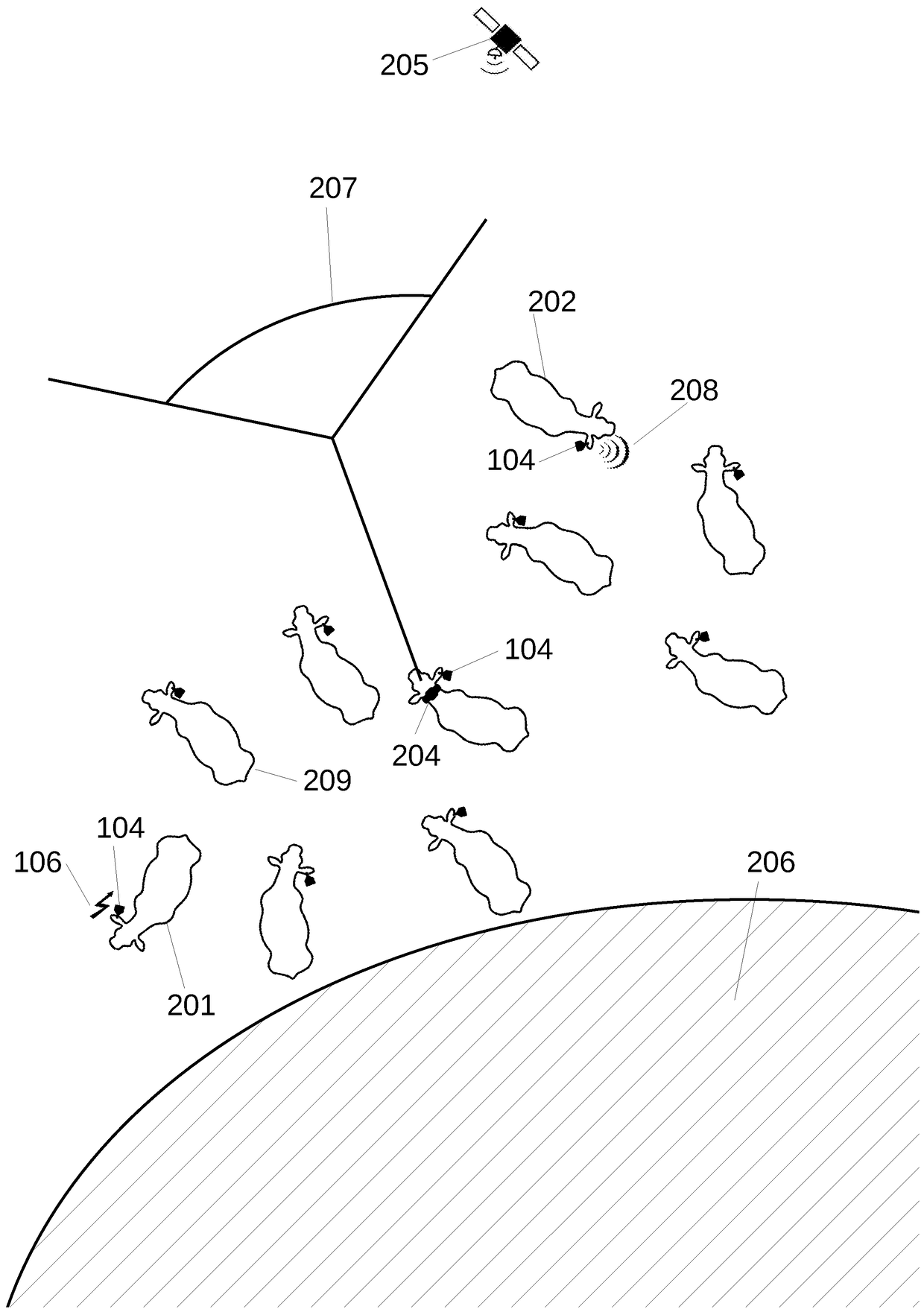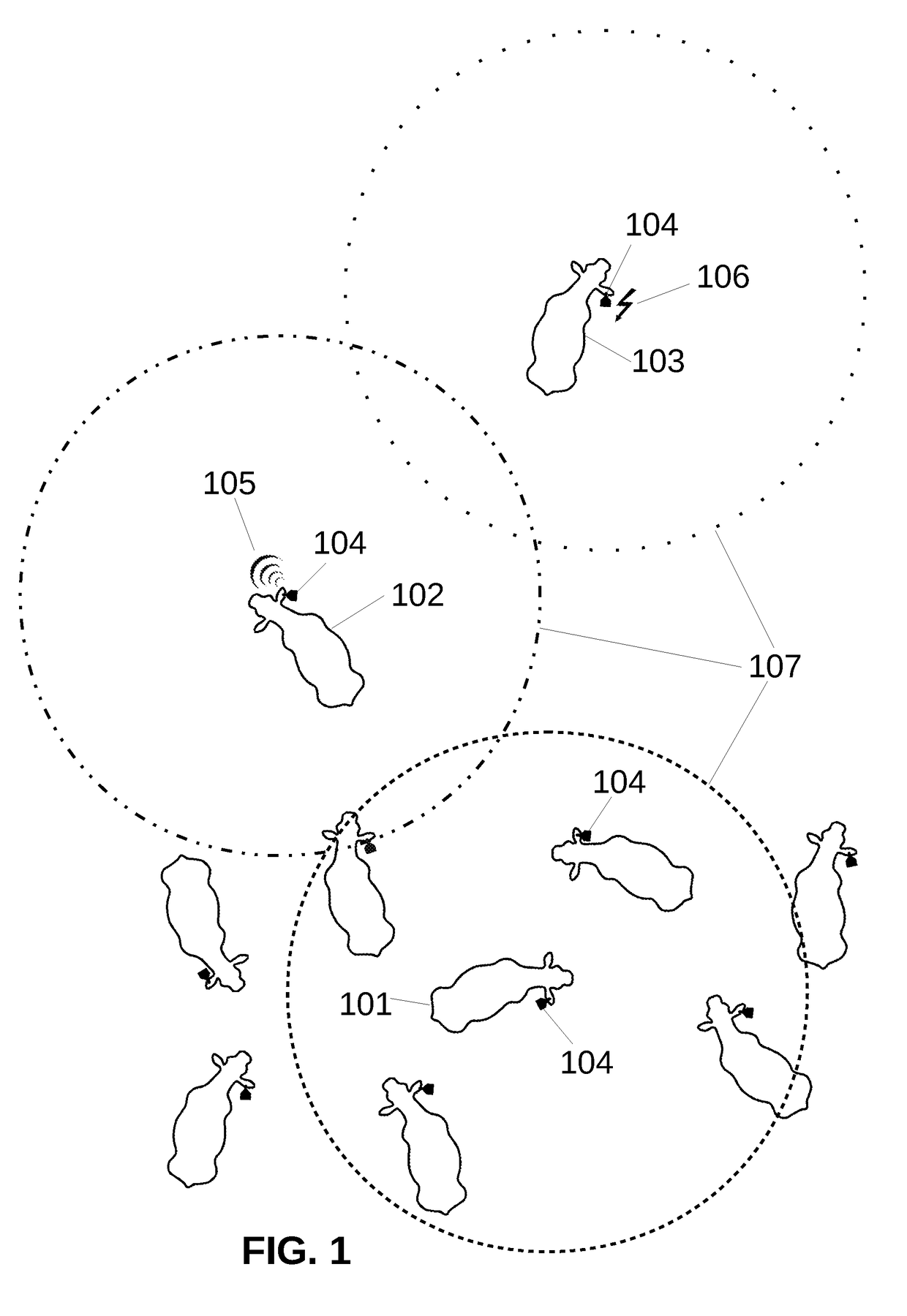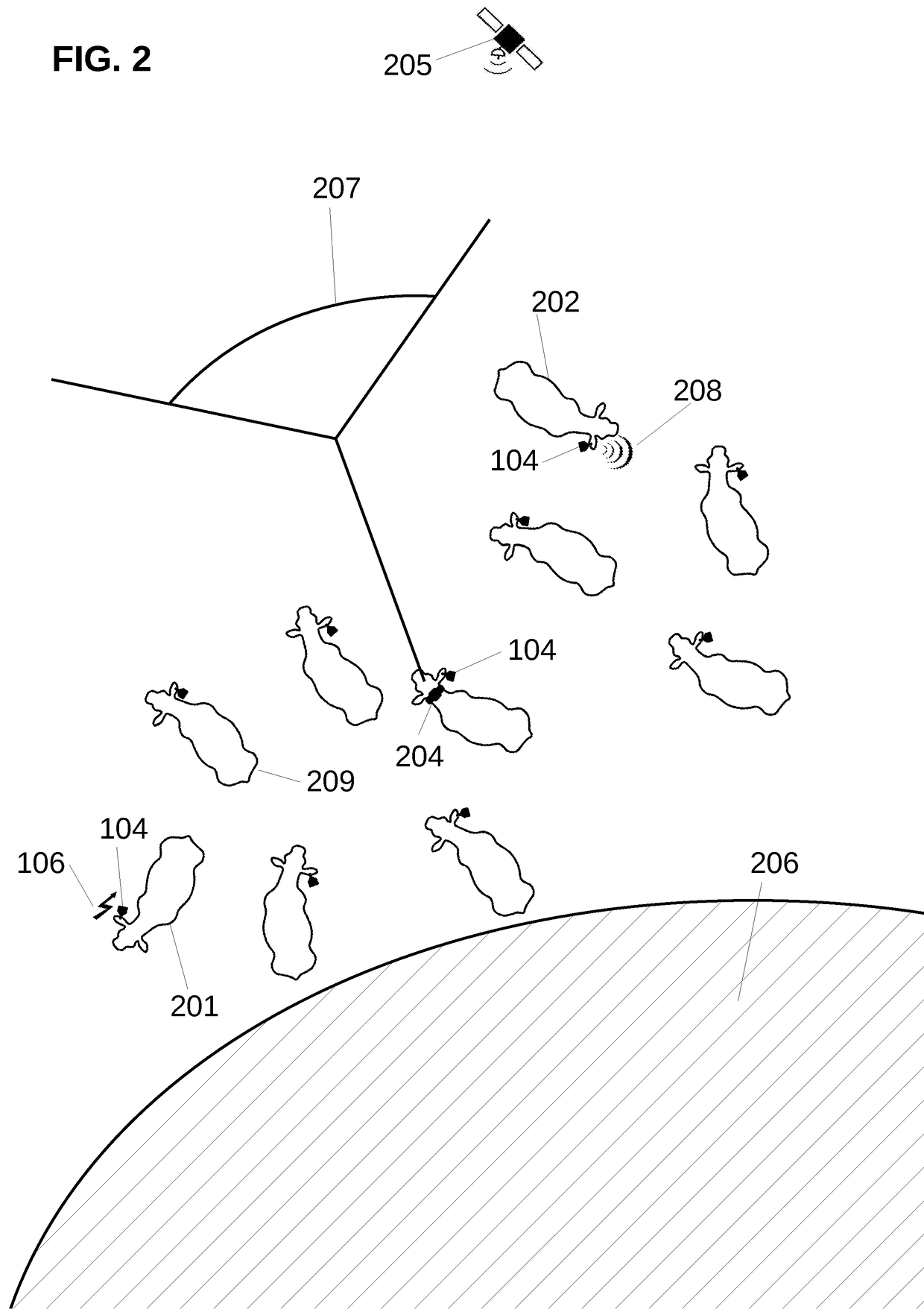Herd control method and system
a technology of herd control and control method, applied in the field of animal and grazing management, can solve the problems of rangeland degradation, high cost and resource requirements for building fences, and severe drawbacks of physical fences, so as to facilitate learning how to avoid stimulation and maintain herd integrity
- Summary
- Abstract
- Description
- Claims
- Application Information
AI Technical Summary
Benefits of technology
Problems solved by technology
Method used
Image
Examples
Embodiment Construction
[0018]Benefits for the Rangeland—
[0019]Many profound benefits are achieved for the rangeland by utilizing this method to maintain grazing animals as a herd. Pastures are grazed more uniformly since the animals are compelled to forage close together rather than spreading out in search of especially desirable vegetation. Because they are not singled out for consumption, desirable vegetation is given more opportunity to grow and reproduce. Brush and small woody plants are broken by the compact herd and are subjected to greater browsing pressure. Bare ground is loosened by intensified hoof action promoting the absorption of water and the germination of seeds. Single file trails are unused, resulting in reduced soil erosion. Soil fertilization is more uniform, and other animals which utilize the animal droppings, such as dung beetles, follow the herd in mass and bury important nutrients in the soil as the herd moves.
[0020]Benefits for Grazing Animals—
[0021]In addition to the benefits for...
PUM
 Login to View More
Login to View More Abstract
Description
Claims
Application Information
 Login to View More
Login to View More - R&D
- Intellectual Property
- Life Sciences
- Materials
- Tech Scout
- Unparalleled Data Quality
- Higher Quality Content
- 60% Fewer Hallucinations
Browse by: Latest US Patents, China's latest patents, Technical Efficacy Thesaurus, Application Domain, Technology Topic, Popular Technical Reports.
© 2025 PatSnap. All rights reserved.Legal|Privacy policy|Modern Slavery Act Transparency Statement|Sitemap|About US| Contact US: help@patsnap.com



